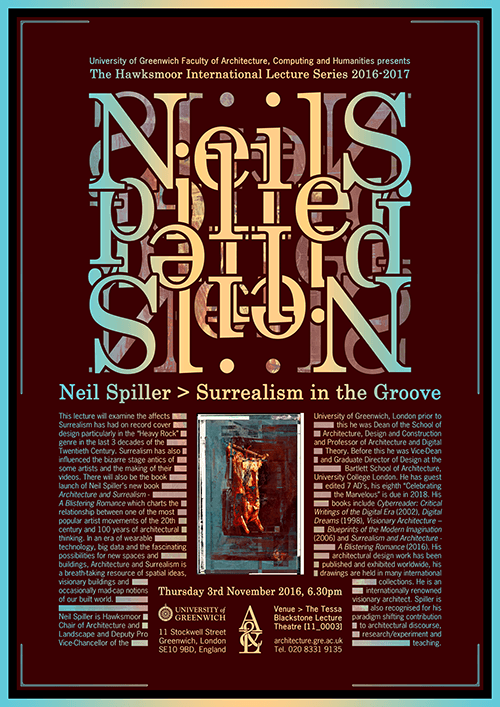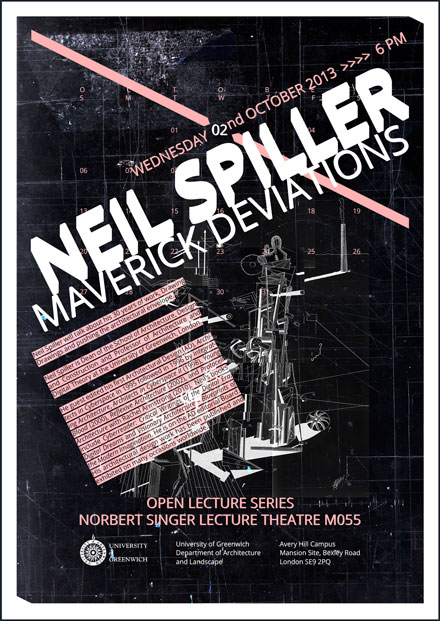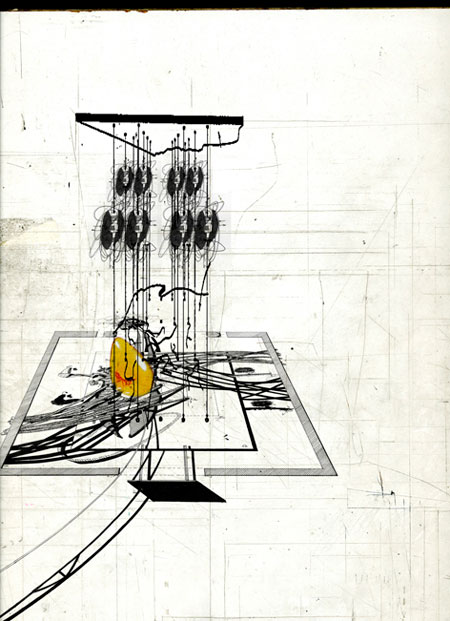- Thursday 3rd November 2016, 6.30pm
- Tessa Blackstone Lecture Theatre [11_0003]

This lecture will examine the affects Surrealism has had on record cover design particularly in the “Heavy Rock” genre in the last 3 decades of the Twentieth Century. Surrealism has also influenced the bizarre stage antics of some artists and the making of their videos. There will also be the book launch of Neil Spiller’s new book Architecture and Surrealism – A Blistering Romance which charts the relationship between one of the most popular artist movements of the 20th century and 100 years of architectural thinking. In an era of wearable technology, big data and the fascinating possibilities for new spaces and buildings, Architecture and Surrealism is a breath-taking resource of spatial ideas, visionary buildings and occasionally mad-cap notions of our built world.
Neil Spiller is Hawksmoor Chair of Architecture and Landscape and Deputy Pro Vice-Chancellor of the University of Greenwich, London prior to this he was Dean of the School of Architecture, Design and Construction and Professor of Architecture and Digital Theory. Before this he was Vice-Dean and Graduate Director of Design at the Bartlett School of Architecture, University College London. He has guest edited 7 AD’s, his eighth “Celebrating the Marvelous” is due in 2018. He is on the AD editorial Board. His books include Cyberreader: Critical Writings of the Digital Era (2002), Digital Dreams (1998), Visionary Architecture – Blueprints of the Modern Imagination (2006) and Surrealism and Architecture- A Blistering Romance (2016). His architectural design work has been published and exhibited on many occasions worldwide, his drawings are held in many international collections. He is an internationally renowned visionary architect and his work has a remarkable graphic dexterity. Spiller is also recognised internationally for his paradigm shifting contribution to architectural discourse, research / experiment and teaching.


